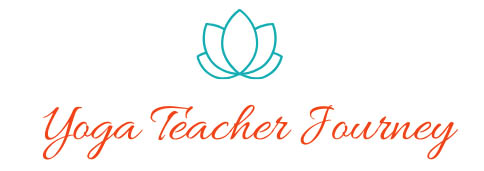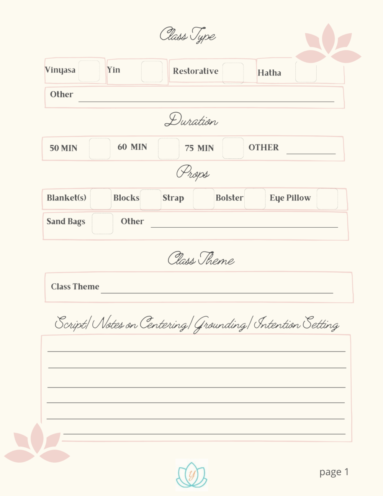What is a guided meditation? There is a lot of talk about mindfulness and meditation these days because meditation is proven to offer many benefits from increasing calmness and overall emotional well-being to improving mental cognition and reducing memory loss.
Meditation, or Dhyana in Sanskrit, is the 7th limb of yoga as described in Patanjali’s Yoga Sutras. It is defined as the “uninterrupted flow of concentration” (Yoga Journal). A common misconception about all meditations is that the mind should be clear from thoughts. Generally, the practice of meditation is to cultivate awareness of the thoughts and to use an object (the breath, mantra, affirmation, imagery, etc.) as an anchor to keep your mind from wandering (monkey-brain).
A guided meditation is lead by a teacher (or narrator) to guide the student to focus on a single object such as the breath, visualization, and imagery, to help facilitate the meditation.
Below are a few of my favorite and frequently taught meditations. Students should be in a comfortable seated or reclined position (my preference), for each of these guided meditations.
Hike Visualization for the Senses
Imagine you’ve been on a difficult hike through steep, rough terrain on a narrow trail – through some very tall trees blocking much of the light above. You feel the weight of your legs and body noticing each step, hearing the thud of each foot as you apply pressure into one and then the other, repeatedly.
Just ahead, you begin to see some glimmering rays of light dancing through the rustling leaves overhead. As the trail begins to level, it becomes wider and the footing more secure. You begin to notice the scent of rich soil and fresh plant foliage. You are now hearing the sound of water running and birds singing and you begin to feel a soft breeze on your skin, which seems to be matching the movement of the leaves. The path is now becoming even more illuminated by the sun.
Finally, the path opens up and you see a field of beautiful wildflowers on one side and a small mountain lake on the other. You stop walking and sit down on the side of the trail to take a drink of water. As you taste the cold, fresh water on your tongue, you relax and take it all in. The grass and flowers are waving in the breeze, the lake is being fed by a beautiful waterfall. You take in the scents of nature’s essence, the sounds, and the sights all around you. You are aware of the feeling of the air, the sun, and the water droplets on your skin. You lay down in the grass and close your eyes. You feel as if you are floating, weightless, all of your senses heightened and aware of where you are in this present moment in time.

Chakra Meditation
This meditation is recommended to culminate a full chakra series. Sit quietly for a moment and take a few slow, deep breaths. Let tension and stress slide away. Just be in the moment with your body.
Muladhara – Root Chakra RED
Bring your attention to the base of your spine, your tailbone, and imagine a bright spinning red light. Feel it pulsing and rotating with your breath. This is the “I AM” part of you that grounds you and cultivates a sense of being. Sit with that for a moment.
Svadhishana – Sacral ORANGE
Move your attention up your spine to the area a couple of inches below your belly button. Feel the warmth of a bright, orange spinning light. Again, notice how it moves with your breath. This chakra brings us fluidity, creativity, and affects our relationships and sexuality.
Manipura – Solar Plexus YELLOW
Guide your attention further up to a couple inches above your belly button. You’re probably familiar with this area, because when you feel strong emotions like love or fear, you likely feel it here. Notice how you can sense the intense yellow light rotating in that spot.
Anahata – Heart GREEN
Bring your attention further up to the center of your chest where your heart is. This area harnesses a bright green light. When you’re touched or moved, you might instinctively place your hand over this spot. Connect with that area now.
Vishuddha – Throat BLUE
Then, bring your attention to your throat, the dip in between your collar bones. Imagine a bright blue light spinning in that area. This chakra is responsible for your voice and being heard. You may feel the urge to swallow or clear your throat as you think of it.
Ajna – Third Eye INDIGO
Next, move your attention up to the space on your forehead between your eyebrows, your third eye. This area holds a deep indigo rotating light. Imagine yourself becoming wiser as it spins and becomes brighter.
Sahasrara – Crown VIOLET – WHITE
Finally, shift your attention to the very top of your head. Imagine a vibrant, spinning violet light that shines right out of the top of your body. This light connects you to the universe. Feel the peace that comes with noticing this light.

Gratitude Meditation
Close your eyes. Begin noticing your breath. Follow the path of your breath – in through your nose and out through your nose. Do nothing here except notice the length of each inhale and each exhale. Begin noticing the space between your inhale and exhale.
Take a moment to notice the sound of your breath and the beating of your heart. Give thanks for your existence here on earth. For who you are and for having the ability to be present here in this moment.
Begin to transfer that thankfulness to friends and family. Be thankful for the connections that have been created with each of them. Allow yourself to see their faces and their smiles. Know that each of them is special to you and YOU are special to each of them. You are all linked and connected with each other. Breathe in and breathe out.
Extend that sense of gratitude to other areas of your life. For the gifts you may have… for whatever ways you are creative.. for the animals in your life and for their little souls. For all of nature, the flowers and plants… as you breathe in and breathe out, feel gratitude for life in its essence, every day.
EXPAND that sense of gratitude beyond what you experience in your life, and extend gratitude to every being in the universe, for each being contributes and brings balance and peace in this world. Maintain that feeling of gratitude throughout your practice and when you leave the mat.
Sa Ta Na Ma
Sa Ta Na Ma is a Kundalini meditation also known as Kirtan Kriya. It is practiced to clear your subconscious for a fresh start and give you mental clarity and focus. The meaning of each syllable is as follows:
Sa – birth
Ta – life
Na – transformation
Ma – rebirth
As you perform this meditation, say each syllable quietly to yourself while touching the following fingers together on both hands:
Sa – thumb and index fingers
Ta – thumb and middle fingers
Na – thumb and ring fingers
Ma – thumb and pink fingers
These syllables are broken down from the popular Sanskrit phrase Sat Nam which translates to “I am truth.”
Touch and Space Meditation
This meditation is best practiced in a reclined position.
Begin to notice the places on your body that are touched and supported by the earth: behind your head, your back, buttocks, legs and feet.
Feel the full support of the earth beneath your body.
Notice the places that are not touched or supported, such as behind your neck, wrists, behind your knees, your low back and ankles.
Begin to notice the space in front of your feet.
Now, notice the space behind the top your head.
Notice the space above your body.
Begin to notice the space around your entire body.
Expand your awareness to the space around the entire room.
Feel the energy within the room.
Expand your awareness further to include outside the walls of the room into the outdoors wide open spaces.
Become aware of the energy you feel as you broaden your awareness from your immediate space to the external and open spaces of the Universe.
See more on guided meditations, mantras, and affirmations in How to Beautify Your Yoga Class with Jewels.
More resources:
Practicing Mindfulness by Matthew Sockolov
The Healing Waterfall: 100 Guided Imagery Scripts for Counselors, Healers & Clergy by Max Highstein





